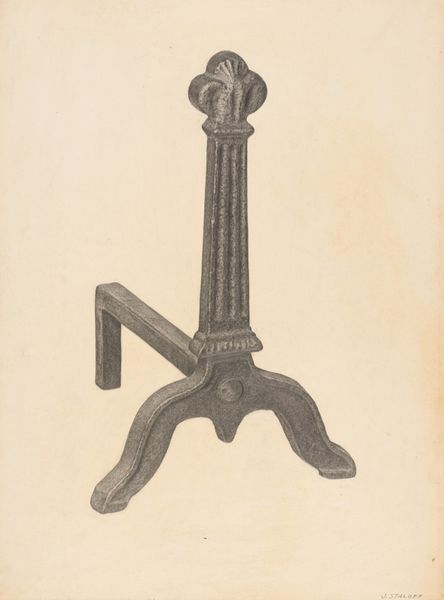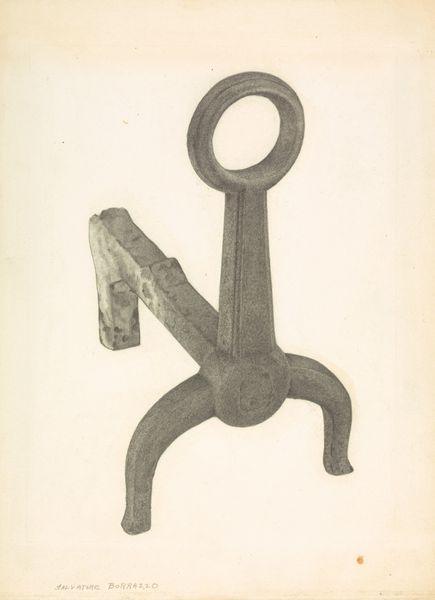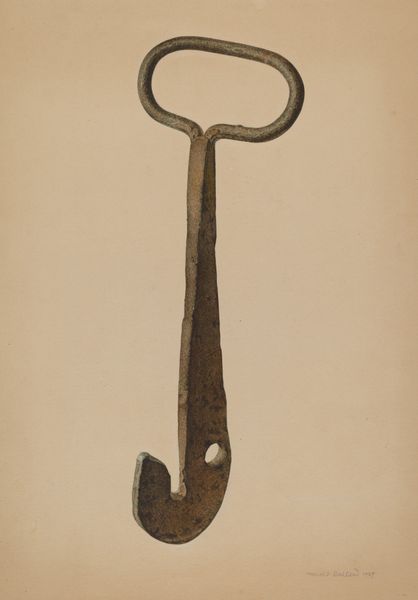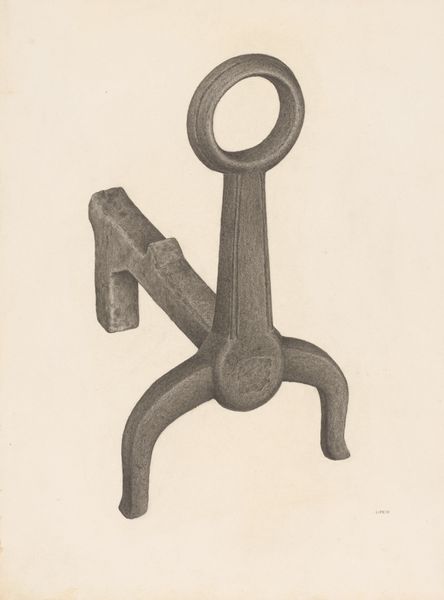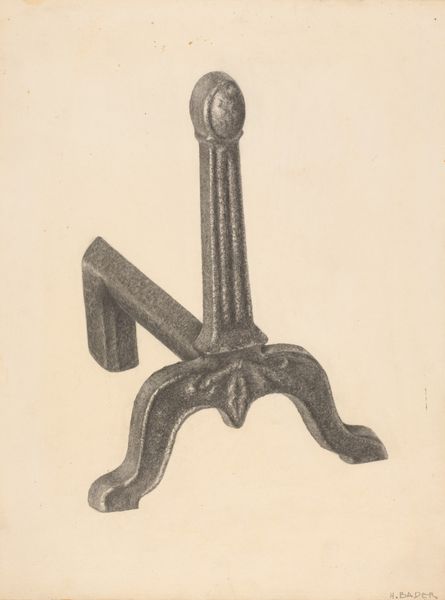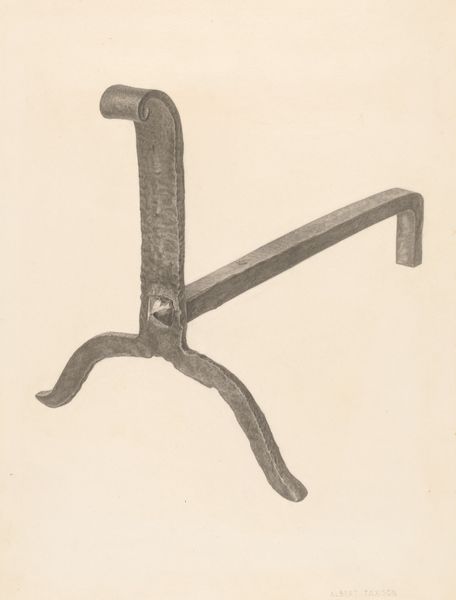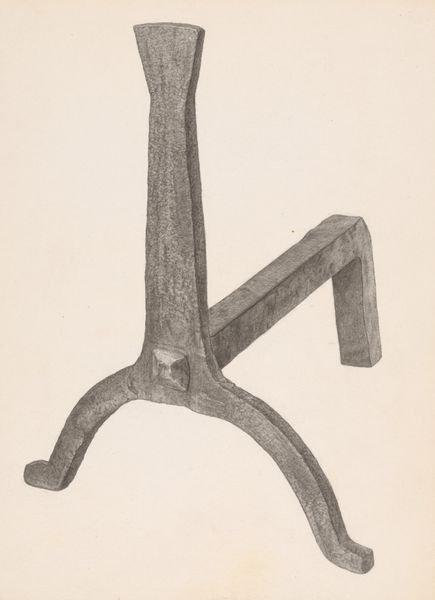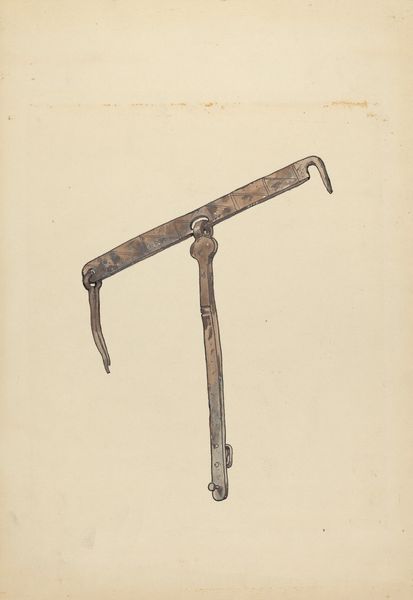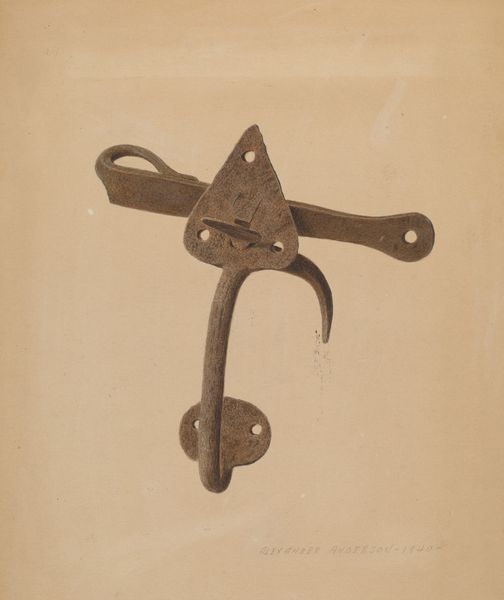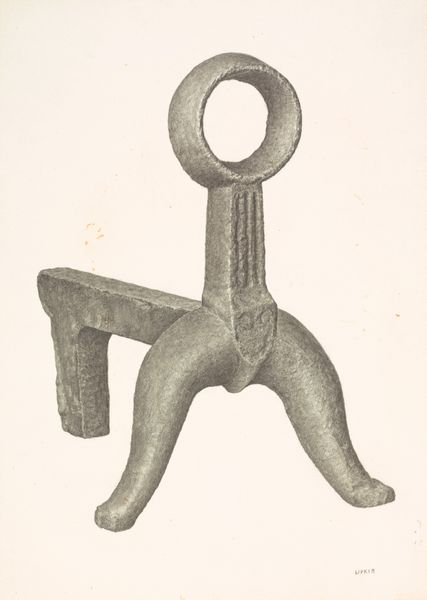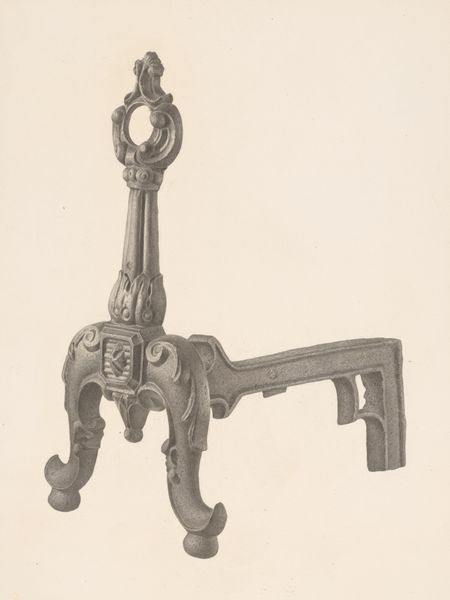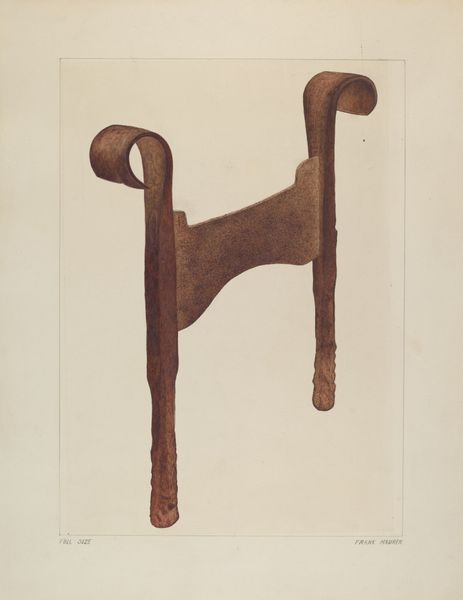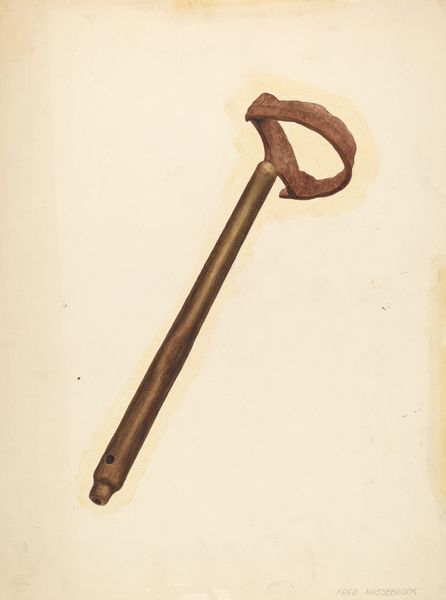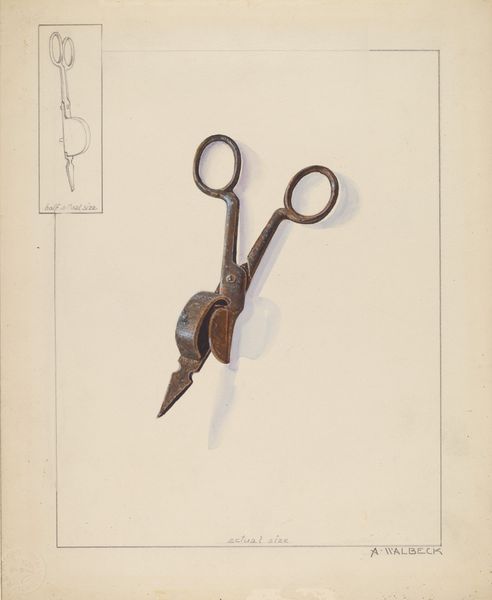
drawing, coloured-pencil, pencil
#
drawing
#
coloured-pencil
#
pencil drawing
#
coloured pencil
#
pencil
Dimensions: overall: 30.2 x 22.2 cm (11 7/8 x 8 3/4 in.) Original IAD Object: 14 3/4" high; 7 1/2" wide; 13 1/4" deep
Copyright: National Gallery of Art: CC0 1.0
Curator: This colored pencil and pencil drawing, titled "Andiron," comes to us from around 1938 and is by Eugene Bartz. What strikes you about it initially? Editor: The weightiness. Despite being a drawing, it conveys such a palpable sense of density, almost rusticity. There's a certain functional elegance too. Curator: It’s interesting you pick up on the "rusticity," since these were mass-produced objects during that era. Look at how Bartz meticulously rendered the patinas and the wear; he is capturing evidence of industry and labor within a domestic object. Editor: Indeed. Notice the careful articulation of form, particularly the legs and their gentle curvature which provides a subtle counterpoint to the rigid angles elsewhere. It almost imbues it with an anthropomorphic quality, wouldn't you say? Curator: Absolutely! The andiron becomes a symbolic object mediating nature—firewood—and culture—the domestic sphere. We tend to dismiss utilitarian pieces but this work helps us consider the process through which design shapes even mundane materials into items of value. Editor: Speaking of process, observe the hatching technique used for shading, the artist using layers to simulate depth and to portray different textures; that range adds layers of meaning. It elevates what might be considered just an ordinary sketch to a thoughtful investigation of the play of light on the object’s surface. Curator: I completely agree. For Bartz, craft and labor intertwine. Drawing this seemingly commonplace andiron provides him the means for engaging with a cultural artifact, subtly underlining both function and inherent artistic worth. Editor: Ultimately, it serves as a lesson, prompting viewers like myself to perceive functional things in art and the art inherent in functional things. Curator: Yes, and for me, that intersection allows us to understand the processes and cultural context within what could be conceived otherwise as “invisible.”
Comments
No comments
Be the first to comment and join the conversation on the ultimate creative platform.
